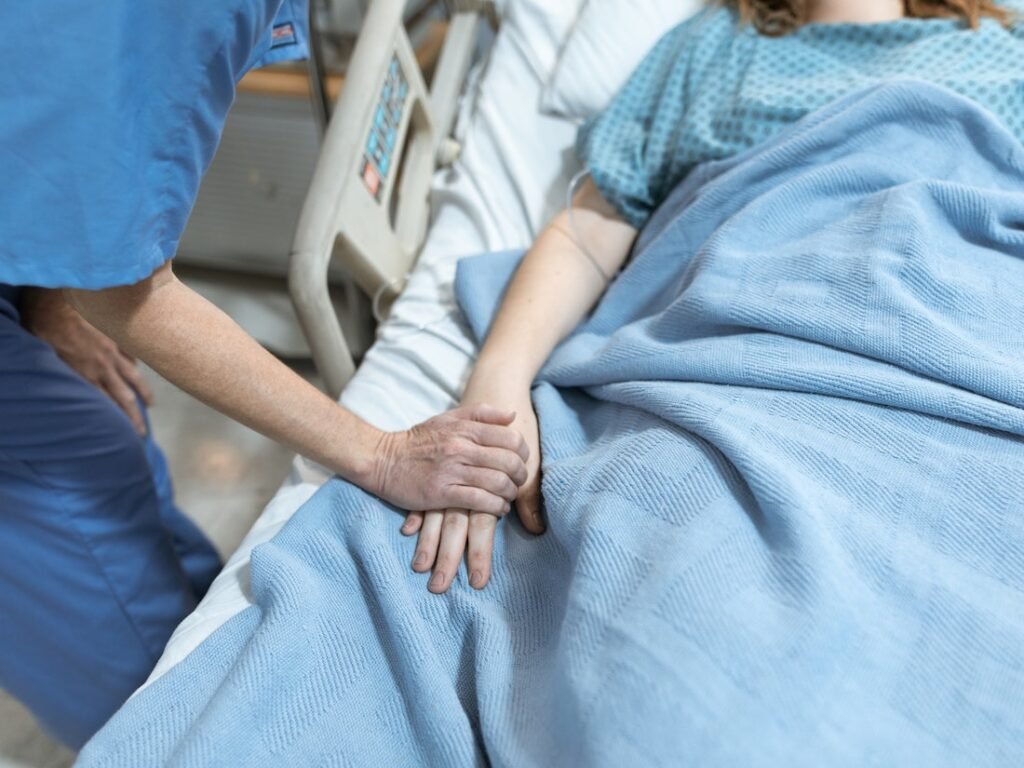
C-section is now a relatively common way of giving childbirth. Statistics show that about one-third of all births in the US occur through C-section or Cesarean. It means almost 1.2 million c-sections are carried out in the nation annually.[1]
A C-section is a surgical procedure. Though it is a major surgery, it is relatively safe, and fatal outcomes are rare. On the contrary, c-section saves lives.
It is done for many reasons like difficulty in delivering naturally, multiple pregnancies, poor maternal health, previous c-section, and so on.
Since c-section is a major surgical intervention, post-surgical complications are not rare. Some of the issues faced by those who have undergone C-sections include:
- Pain and discomfort: Women may experience pain and discomfort at the incision site and throughout their bodies for a few days or weeks after the procedure.
- Delayed breastfeeding: Women may experience a delay in breastfeeding their babies, as the anesthesia and pain medication used during the procedure may affect their milk production.
- Longer hospital stays: Women who undergo a c-section may need to stay in the hospital for a longer period of time to recover from the procedure.
- Increased risk of infection: Women who undergo a c-section may have an increased risk of infection at the incision site or in their uterus.
- Adhesions: Scar tissue may form inside the abdomen after a c-section, which can cause pain and fertility issues in some women.
Burning sensation after c-section
It seems that post-surgical complaints are not rare in those living with C-sections. Thus, studies show that as many as one-fifth of women who have undergone C-sections continue to experience chronic persistent pain. Studies show that in 6-7% of the cases, pain is experienced even after a year.[2]
Similarly, one of the most common chronic complaints after a c-section is a persistent burning sensation.
The burning sensation is often described as a sharp, shooting pain radiating from the incision site or surrounding tissues. There are several reasons why women may experience a burning sensation after a c-section, including:
- Nerve damage: During a c-section, the nerves around the incision site may be damaged or irritated, leading to a burning sensation.
- Scar tissue: Scar tissue that forms around the incision site may pull on the surrounding tissues, causing pain and burning.
- Adhesions: Adhesions, or scar tissue that forms between organs, can also cause pain and burning.
Though complaint of burning sensation is pretty common, it is rarely the cause of concern. Such kind of burning sensation does not indicate that doctors have done something wrong. It is normal for some smaller nerves to get damaged in the process. Similarly, some women may develop adhesions.
These are not the reasons to refuse from c-section, especially considering that the surgery is lifesaving for the mother and child in many cases. Nonetheless, knowing about the possible chronic complications like persistent pain or burning sensation is important.
Better understanding can help women to be better prepared for certain issues. Additionally, this may also help provide them with better care, helping resolve the issues.
What to do about a burning sensation after a c-section?

Though a burning sensation is the cause of worry only in a small number of cases, it causes much stress. Fortunately, it would not last long in most cases, but in some instances, it may last for quite a long, thus necessitating medical treatment.
Some of the things one can do to relieve the burning sensation include:
- Take pain medication: Women can take pain medication, such as acetaminophen or ibuprofen, to help manage the pain and burning sensation.
- Apply heat or cold: Applying a heating pad or cold pack to the incision site can help reduce the pain and burning sensation.
- Practice good wound care: Keeping the incision site clean and dry can help prevent infection and reduce pain. By lowering the chances of wound infection, one can also minimize the chances of long-term issues like a burning sensation.
- Gentle movement and exercise: Engaging in gentle activity and exercise, as advised by a healthcare provider, can help reduce pain and prevent adhesions from forming. Exercise focusing on the core muscles can be especially good for lowering burning sensation post-c-section.
- Massage or physical therapy: Massaging the affected area or working with a physical therapist can help relieve tension and reduce pain. It is one of the most effective and safer ways of getting rid of a burning sensation or discomfort after a c-section. It is also suitable for reducing stress and improving mood.
- Support garments: Wearing a support garment, such as a postpartum girdle or abdominal binder, can provide extra support to the abdominal muscles and reduce the burning sensation.
- Proper posture: Maintaining good posture and avoiding slouching or hunching over can help reduce tension and pain in the abdominal muscles.
- Relaxation techniques: Practicing relaxation techniques, such as deep breathing, meditation, or yoga, can help reduce stress and tension in the body, which can help reduce the burning sensation.
- Topical pain relievers: Applying a topical pain reliever, such as a numbing cream or gel, to the incision site can help reduce pain and burning sensation.
- Aromatherapy: Using essential oils, such as lavender or peppermint oil, in a diffuser or applied topically can help reduce pain and inflammation and promote relaxation.
While a burning sensation after a c-section can be uncomfortable and unpleasant, with the proper care and management techniques, women can reduce their pain and discomfort and promote a smooth and healthy recovery.
It is essential for women to communicate with their healthcare provider if they experience any persistent or severe pain or discomfort after a c-section to ensure that they receive the appropriate care and treatment to promote their healing and well-being.
References
- FastStats. Published January 29, 2023. Accessed February 22, 2023. https://www.cdc.gov/nchs/fastats/delivery.htm
- Jin J, Peng L, Chen Q, et al. Prevalence and risk factors for chronic pain following cesarean section: a prospective study. BMC Anesthesiol. 2016;16:99. doi:10.1186/s12871-016-0270-6




 Dr. Preet Pal SB is a physician (M.D. Medicine) with a specialization in diabetes (Fellowship in diabetes, Royal Liverpool Academy). He has a particular interest in metabolic disorders, considering that they are rising in every corner of the world, more so in India.
Dr. Preet Pal SB is a physician (M.D. Medicine) with a specialization in diabetes (Fellowship in diabetes, Royal Liverpool Academy). He has a particular interest in metabolic disorders, considering that they are rising in every corner of the world, more so in India.